Red Flag Alaska 23-3 closes out on 25th of August at Eielson Air Force Base.
Table of Contents
Introduction
Exercise Red Flag Alaska 23-3 (RF-A 23-3) took place from August 10th to 25th, integrating various forces in a complex and realistic threat scenario. Coordinated by the Pacific Air Forces (PACAF), it was the third iteration of the year. Originally named Cope Thunder, the exercise was held annually at Clark Air Base in the Philippines since the mid-1970s. It was relocated to its current location at Eielson AFB in Alaska in 1992 following the eruption of Mount Pinatubo. In 2006, it was officially renamed Red Flag Alaska.
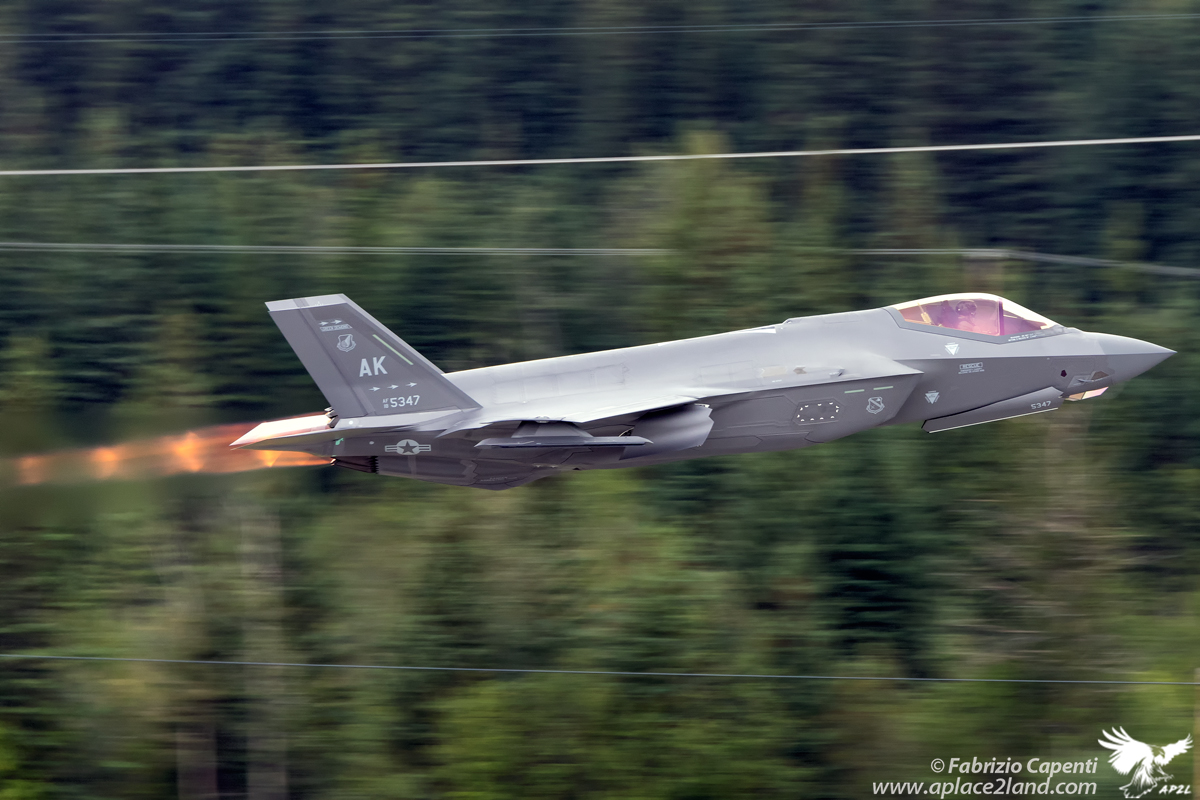
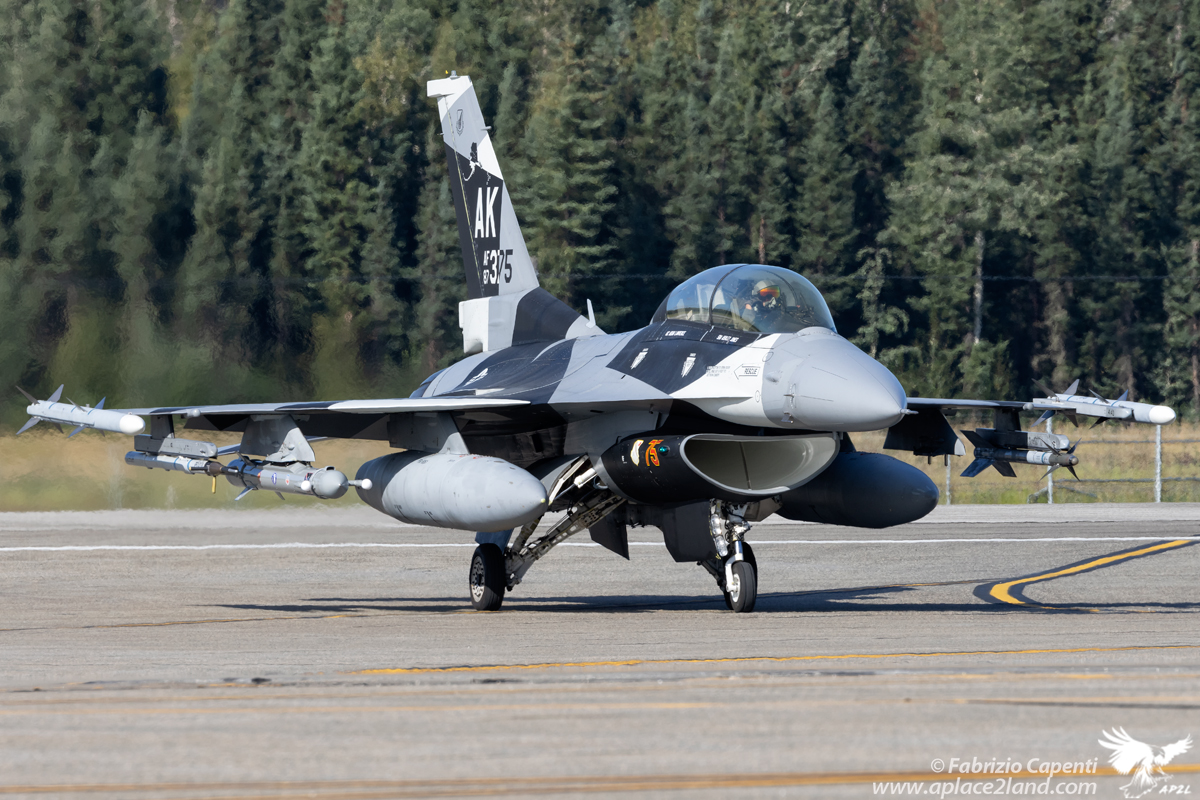
Eielson AFB, located near the city of Fairbanks and the Joint Pacific Alaska Range Complex (JPARC), covering an area of over 67,000 square miles in a sparsely populated region of central Alaska, offers unique and challenging geographical conditions for aerial training. A vast amount of airspace with few restrictions is required to manage such a large number of participants, and Alaska is perfect for this purpose, being the largest U.S. state in terms of area but also one of the least populated.
As stated by Col. Curtis W. Dougherty, Commander of the 354th Operations Group at Eielson AFB and as the Deployed Force Commander for RF-A 23-3: “Integration and interoperability are primary objectives of RF-A, especially after the arrival of fifth-generation aircraft. The significant advantage of conducting an exercise like this in this area of Alaska is the ability to concentrate a large number of diverse resources within the JPARC and have the opportunity to test techniques, tactics, and procedures together with other participants that we implement during our daily training. It is this interoperability that allows us to be ready from day one, in case the Coalition and Allied partners need to come together to respond to a common threat.”
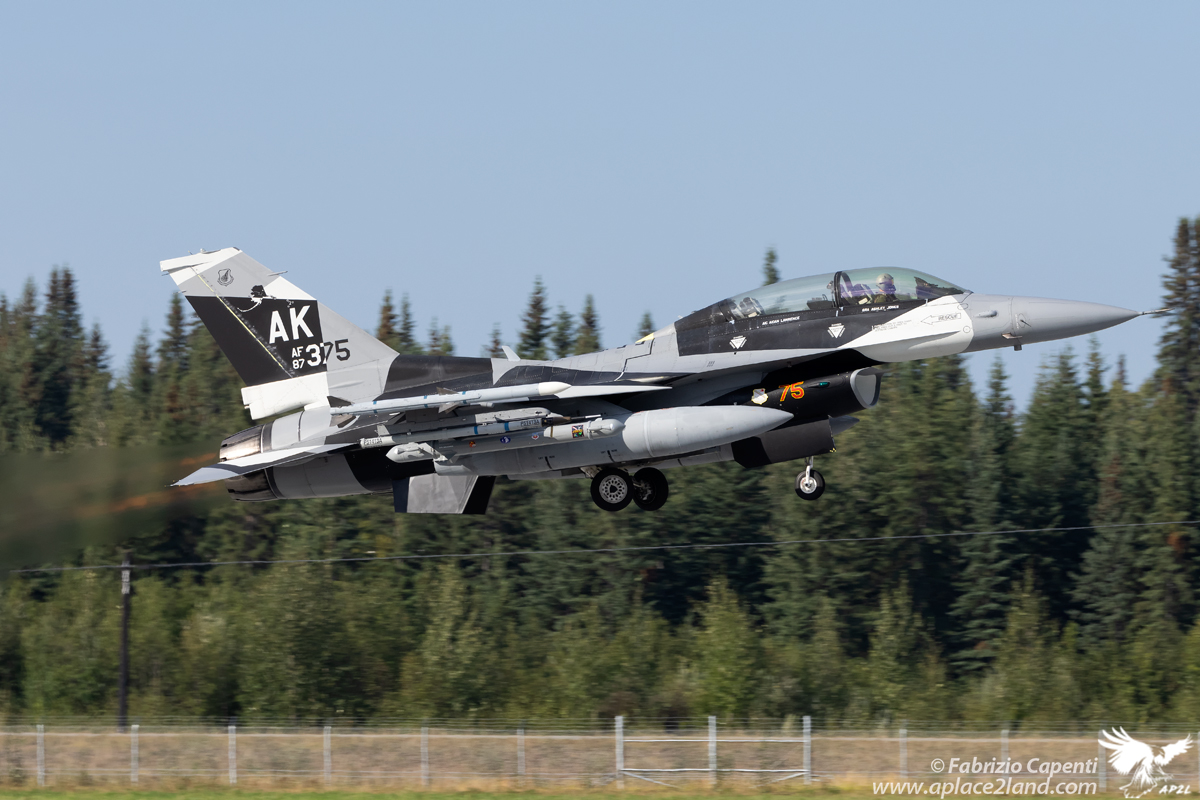
Indeed, analyzing the various missions the U.S. Air Force (USAF) has participated in, it has emerged that the majority of combat losses occur during the first eight or ten missions flown by a crew. Therefore, the goal of RF-A is to provide each crew with the appropriate combat preparation to face these initial missions, thereby increasing their chances of survival.
RF-A 23-3 involved various units, including fighters, transport aircraft, refueling aircraft, airborne early warning and control (AWACS), from several air forces such as the USAF, U.S. Marines Corps (USMC), the US Navy (USN) and the Royal Australian Air Force (RAAF), most of which were based at Eielson AFB, while others operated from JBER Elmendorf-Richardson AFB near Anchorage. Despite the variety and specific roles of the entities involved, RF-A organizers take this into account and plan flight operations in a way that makes the training activity optimal for everyone. Participants in RF-A are divided into “Red” aggressor forces, “Blue” coalition forces, and “White” forces, representing the neutral overseeing and control agency.
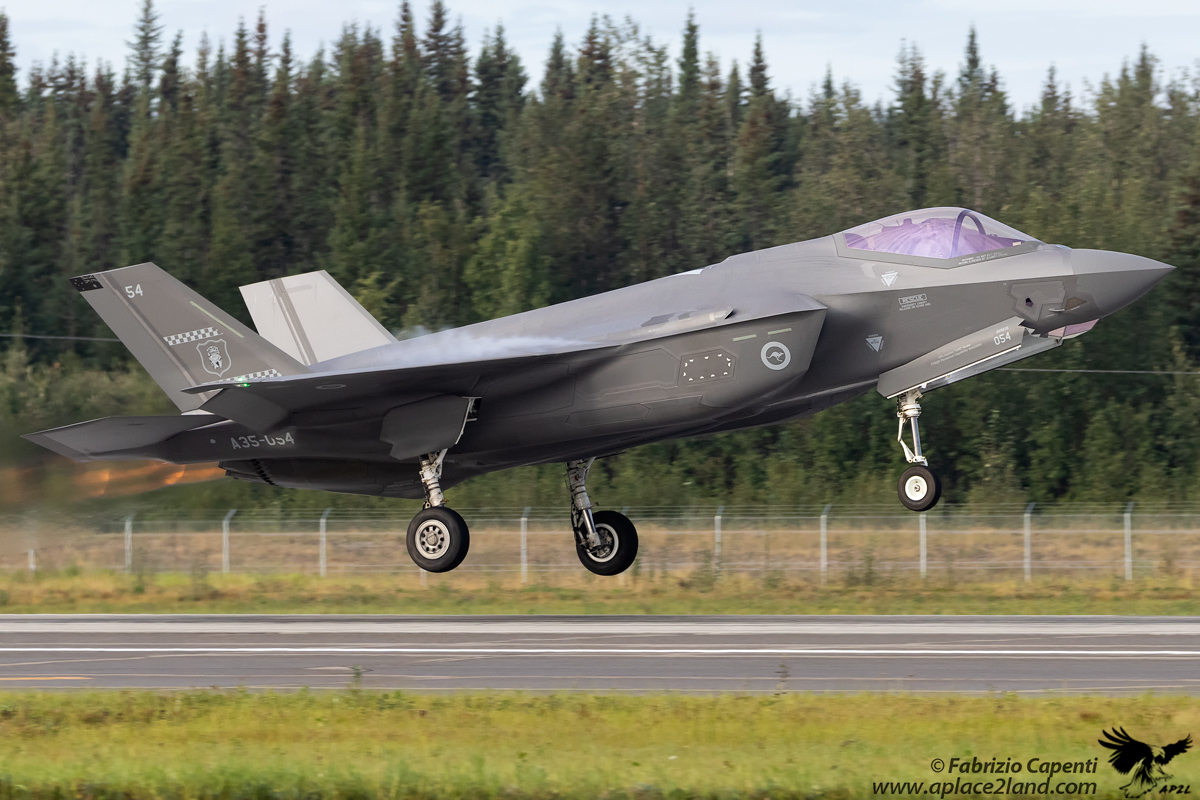
During RF-A 23-3, two missions were conducted each day, one in the morning and one in the afternoon. These missions are divided into three different types: STRIKE, OCA (Offensive Counter Air) with SEAD (Suppression of Enemy Air Defense), and DCA (Defensive Counter Air).
As Col. Dougherty explains: “In the first case, the main objective of the Blue Force is to attempt to penetrate enemy territory and strike priority targets in the scenario we have developed. OCA and SEAD sorties, on the other hand, aim to bring all our resources close enough to enemy territory to destroy or suppress SAM batteries or other threats, in order to establish air superiority in contested areas. In the case of DCA, the goal is to protect ‘the good guys land’ from enemy attack led by the Red Air component, doing everything possible to prevent them from doing so.”
Participants
Starting with the units under the 354th Wing based at Eielson AFB, the participating squadrons were:
- 18th Aggressor Squadron (18th AGRS) “Blue Foxes,” equipped with Lockheed Martin F-16C Fighting Falcon, Block 30. Acting as part of the Red Force, the primary mission of the 18th AGRS is to provide a realistic representation of the threat to the Blue Force.
- 356th Fighter Squadron (356th FS) “Green Demons,” equipped with the fifth-generation fighter Lockheed Martin F-35A Lightning II.
- 168th Air Refueling Squadron (168th ARS), part of the Alaska Air National Guard, participated in the exercise with its Boeing KC-135R Stratotanker aerial refueling aircraft.
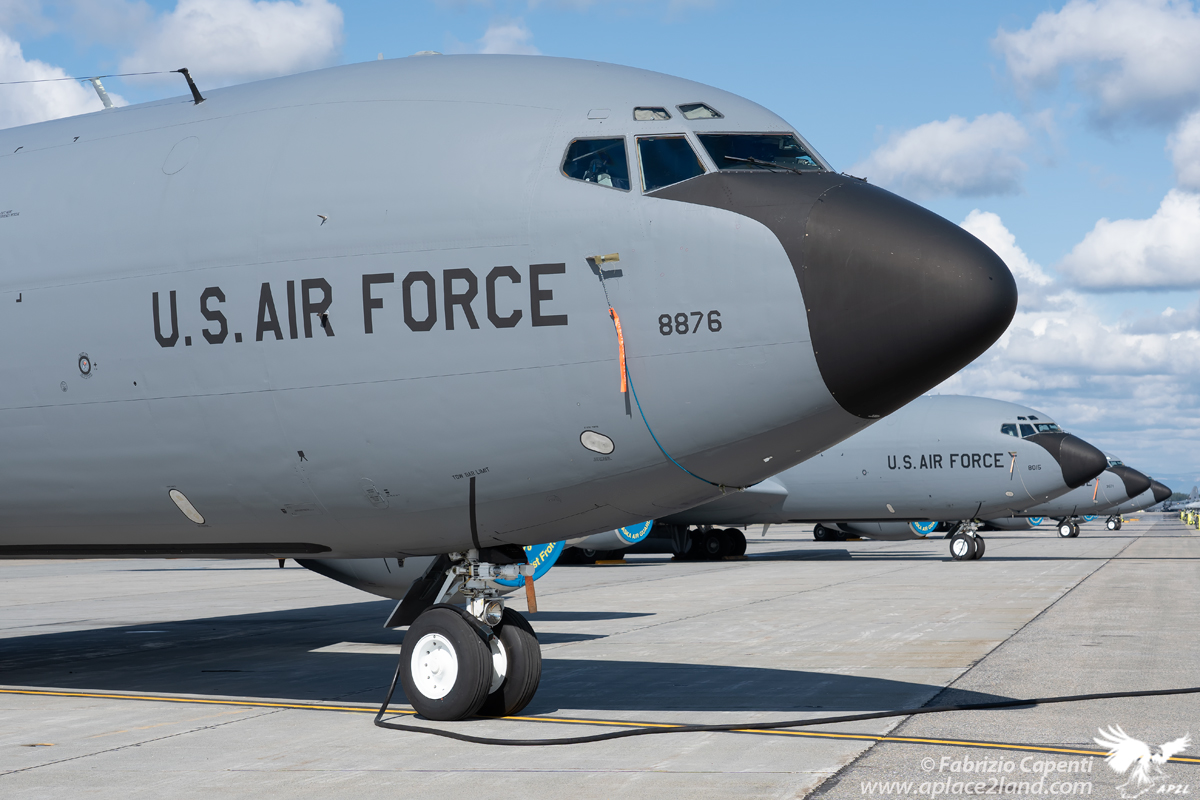
Other participating units based at Eielson AFB include:
- US Navy participated by deploying the Electronic Attack Squadron 134 (VAQ-134) “Garudas,” an electronic warfare unit of the United States Navy based at Naval Air Station Whidbey Island in the state of Washington. Currently, the squadron is equipped with the Boeing EA-18G Growler. Growlers are specialized in electronic warfare missions using a wide variety of jammers to confuse enemy radar systems, significantly enhancing the ability to conduct SEAD operations. It is one of only five non-carrier-based Expeditionary Squadrons in the US Navy and is frequently deployed worldwide to support US Air Force Expeditionary Wings, allied task forces, and more. Last year, VAQ-134 deployed six aircraft to Spangdahlem AB in Europe during the early stages of the Ukrainian conflict to bolster NATO’s deterrence and defense capabilities along the eastern flank.
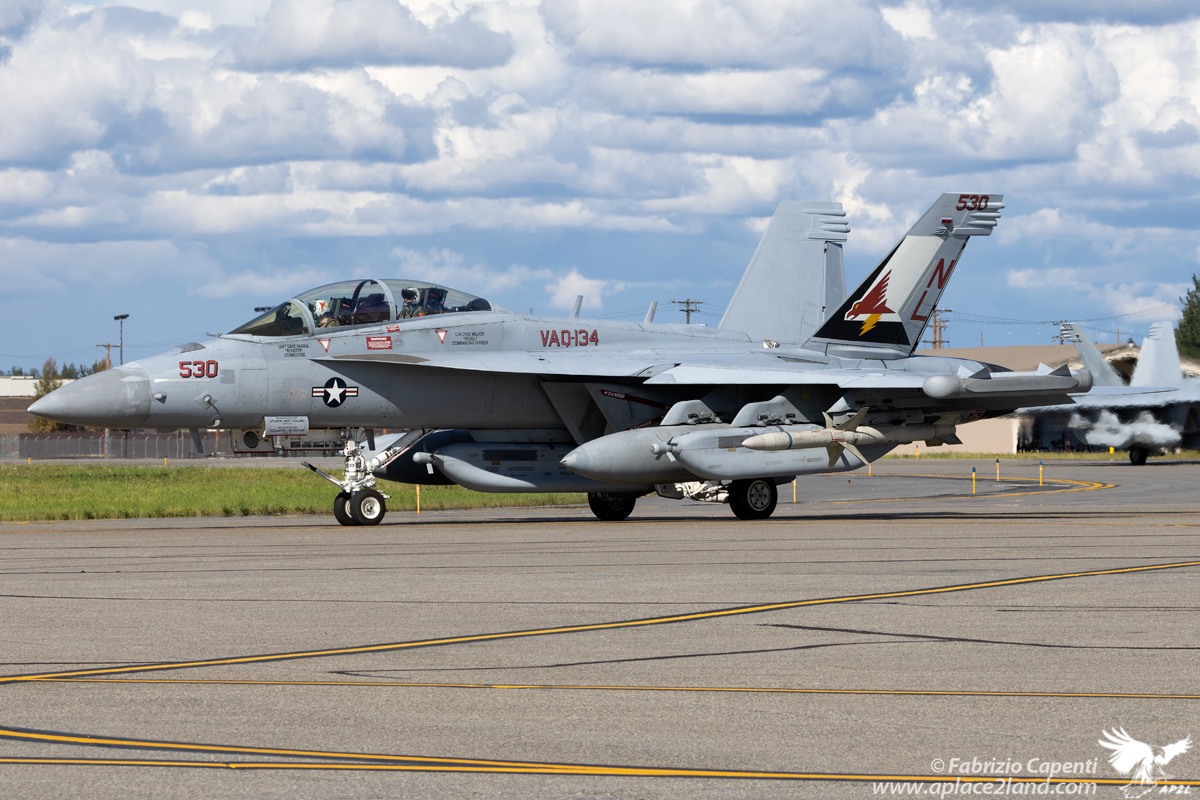
- US Marine Corps participated with the Marine Fighter Attack Squadron 214 (VMFA-214) “Black Sheep,” part of the 3rd Marine Aircraft Wing (3rd MAW) based at Marine Corps Air Station Yuma, Arizona, equipped with the fifth-generation Lockheed Martin F-35B STOVL Lightning II aircraft that has recently been assigned.
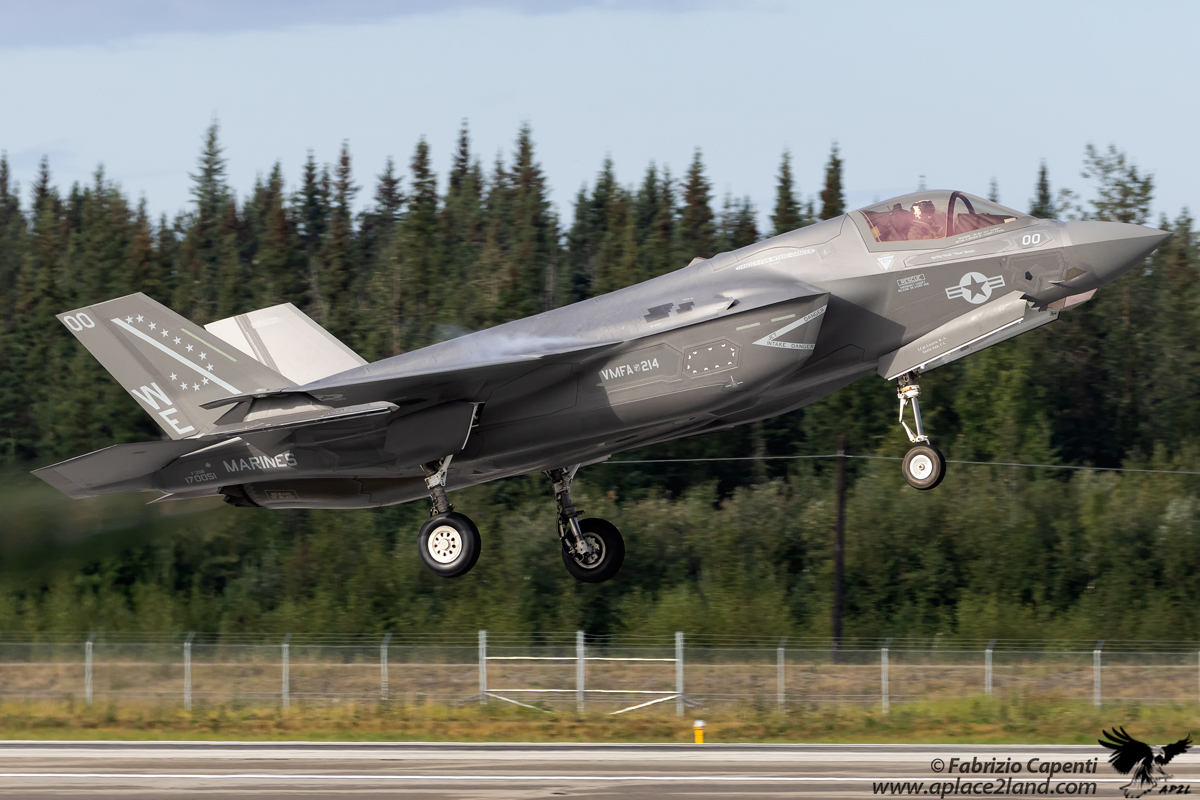
Captain Brown, a former Harrier pilot now assigned to VMFA-214, explained: “When a squadron undergoes such a radical change, the entire community that makes it up is relatively new, so there isn’t much experience, especially during the initial operational phases. In recent months, we have undergone rather intense training activities to prepare pilots and maintainers to be here at RF-A 23-3 in the best way possible.”
Captain Brown continued: “We brought a total of ten aircraft and about 200 people to Eielson, most of whom are ground personnel, and the training we receive on this occasion prepares us best for the future real combat scenarios we will face,” also emphasizing how the Short Takeoff and Vertical Landing (STOVL) capability inherent in the “Bravo” variant of the F-35 allows the USMC to operate quickly and from remote and advanced locations.
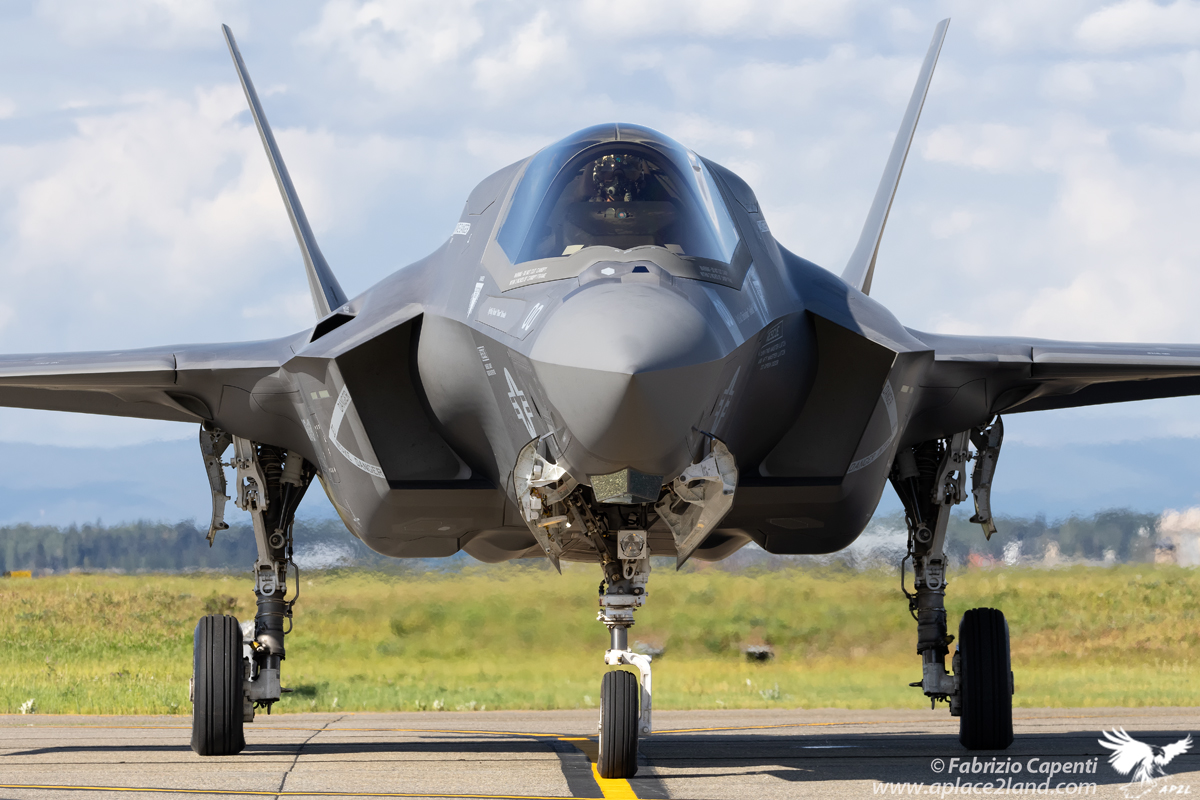
Unlike the “Alpha” version, the “Bravo” variant requires different modes of refuelling, using the “hose-and-drogue” system. During this RF-A, Marines were able to refuel from both the Marine KC-130J operating from Elmendorf, as well as from USAF KC-135 and KC-46 equipped with adapter units that utilize a steel basket, unfortunately known to pilots as the “iron maiden.” Captain Brown added: “This type of refueling allowed Marine pilots to practice their skills and conduct refueling at completely different speeds and from different tankers.”
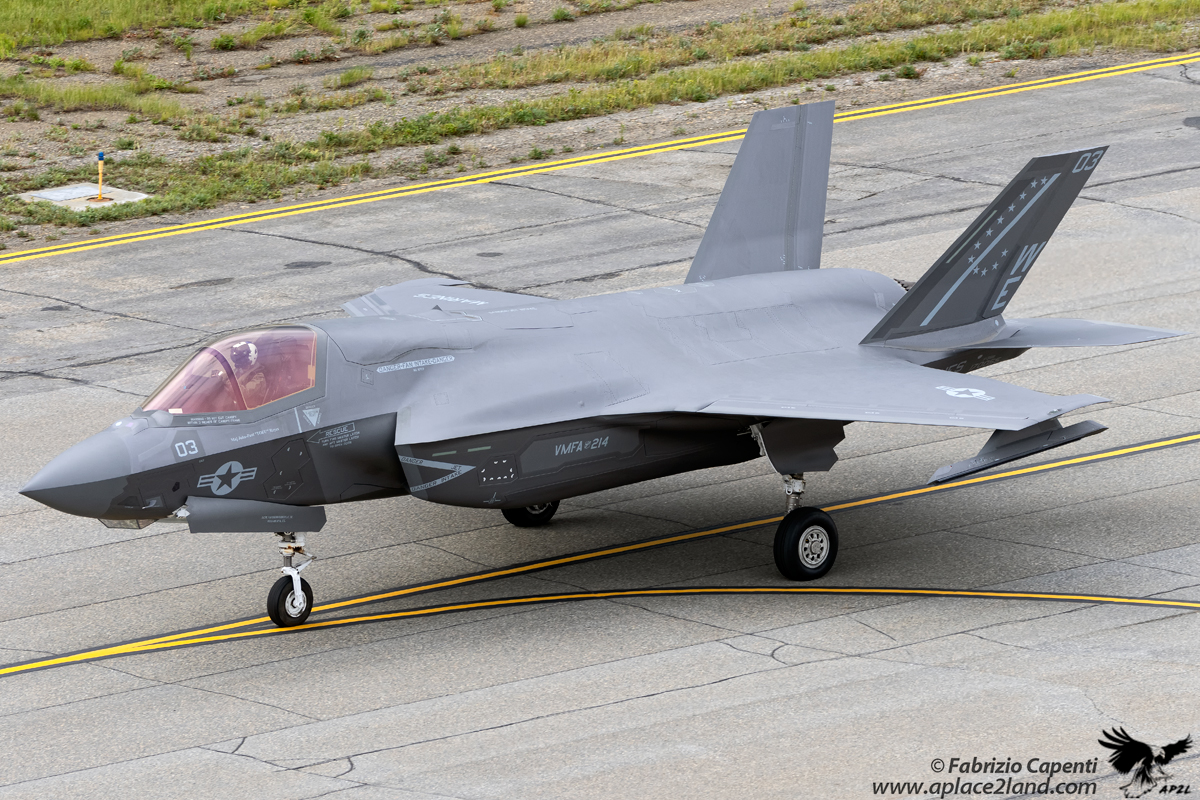
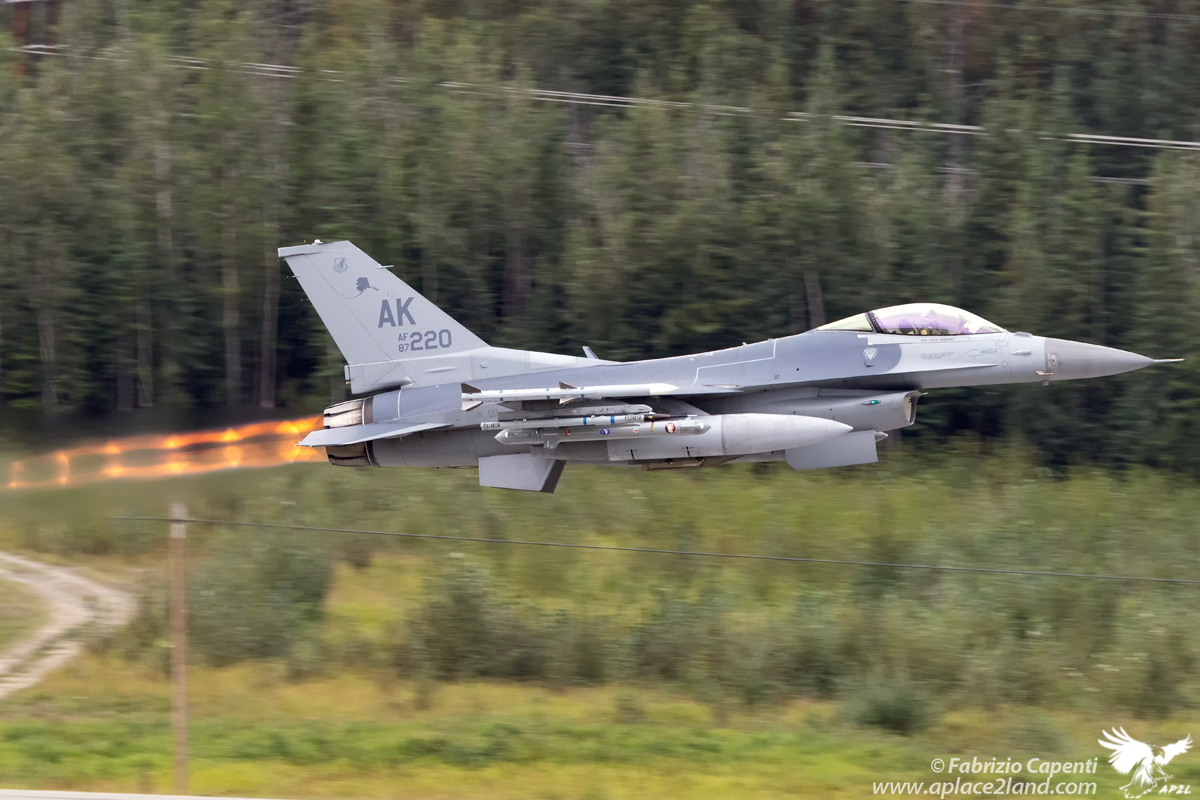
- The Royal Australian Air Force (RAAF) participated in RF-A with the No. 77 Squadron, based at RAAF Williamtown in New South Wales. Since January 2021, they have been equipped with Lockheed Martin F-35A Lightning II, replacing the F/A-18 Hornets previously in service.
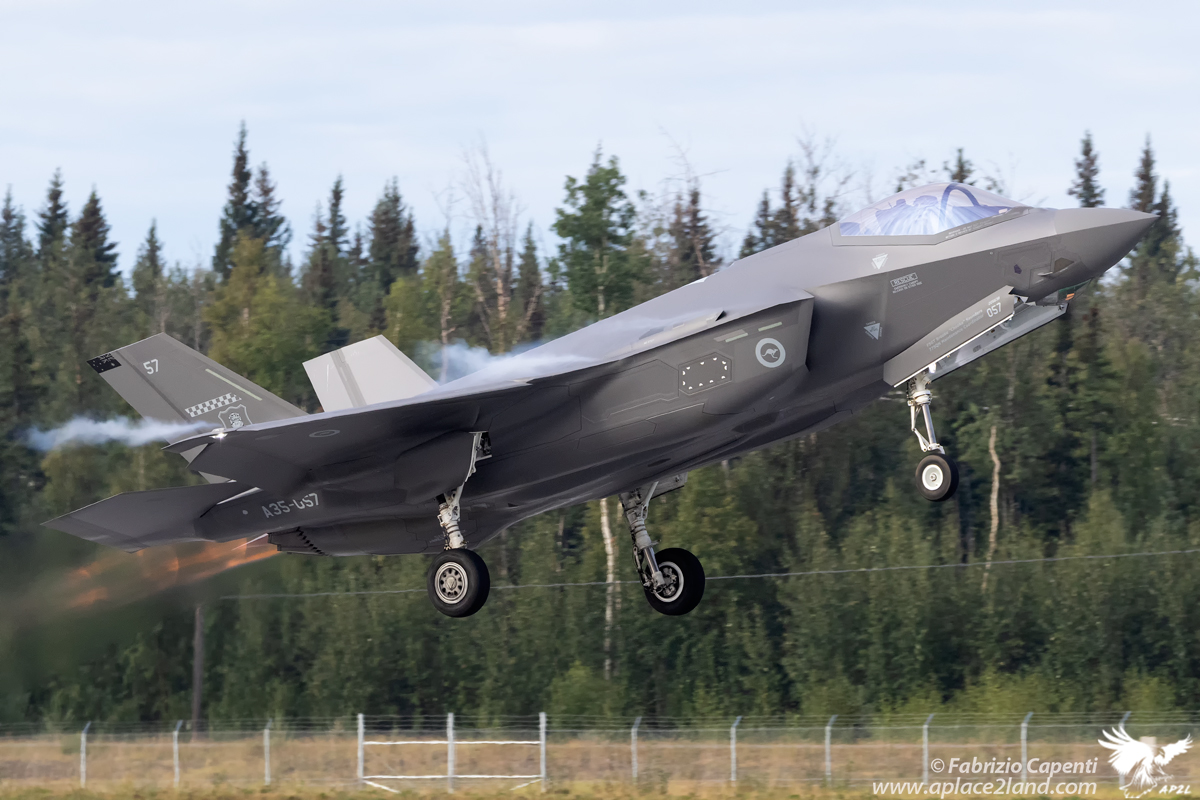
RAAF contingent deployed in Alaska consisted of six F-35A aircraft and approximately 100 personnel stationed at Eielson, along with three Boeing E-7A Wedgetail AEW&C aircraft from No. 2 Squadron, also based at Williamtown, supported by about 70 pilots and ground personnel, deployed to JBER AFB.
Wing Commander Paul Simmons, commanding officer of No. 77 RAAF Squadron during this exercise, stated: “Red Flag is an extraordinary opportunity for us to train with our allies. Alaska itself is an incredible part of the world that offers unique scenarios, so overall, the relationships built and the memories created during these two weeks will last a lifetime.”
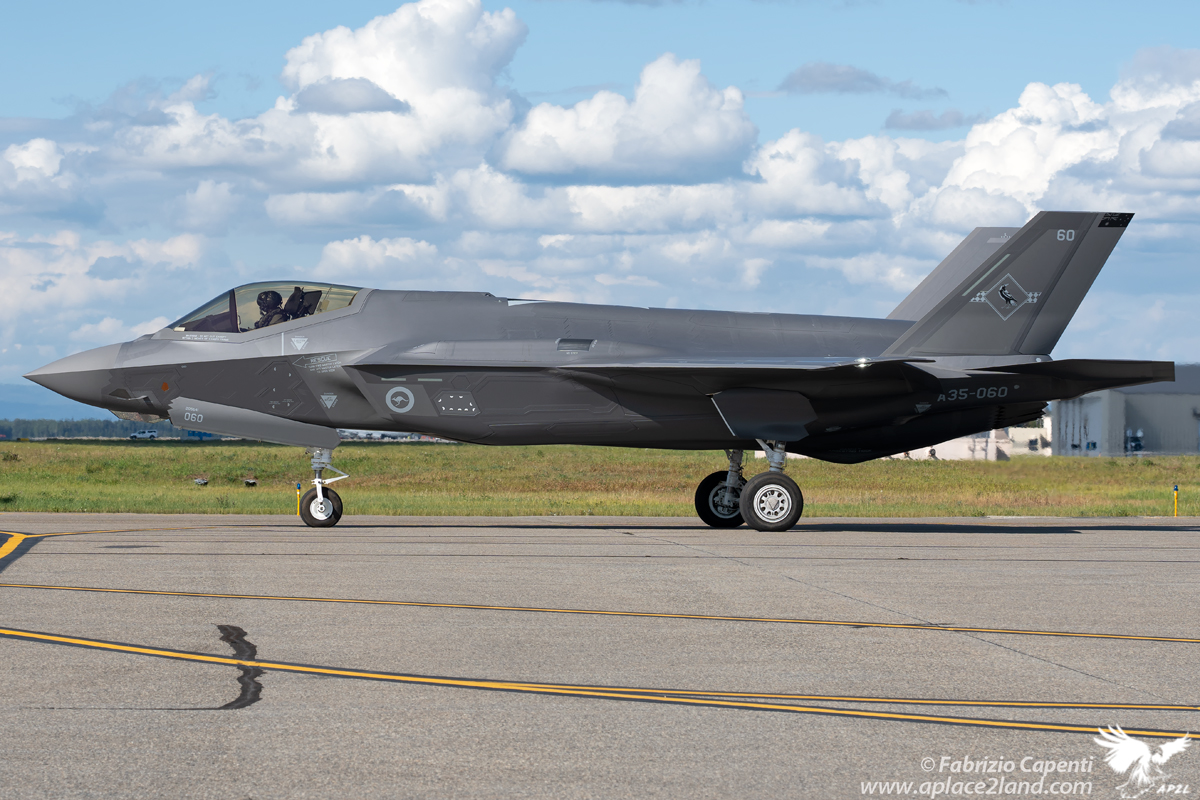
The bond between Australia and the USA is very strong. Both nations are part of the Five Eyes intelligence alliance (with Canada, the UK, and New Zealand).
They often participate in international exercises such as Talisman Saber, Pitch Black, and Red Flag. So far, No. 77 Squadron has had the opportunity to train with the Marines’ F-35s and the USAF’s F-22s. The preparation program for participating in RF-A began in March, in order to train the maintenance personnel, longer shifts and unusual situations were created, attempting to replicate some of the conditions of the exercise. Last month, No. 77 Sq. also trained with their colleagues from No. 3 Sq., who are also equipped with F-35As, at Williamtown AB, and with the Marines’ VMFA-314, contributing to making the scenario of this training even more complex.
Cmdr. Simmons continues: “The opportunity to come to Alaska, where we can have arguably the most realistic training environment in the world, and the ability to work with the USAF and USMC, is incredibly valuable for our entire team. So, from our personnel who work on the aircraft daily, performing maintenance in close coordination with other F-35 operators, it allows us to learn from each other, developing techniques and synergies that will be invaluable in the future years of operating these assets.”
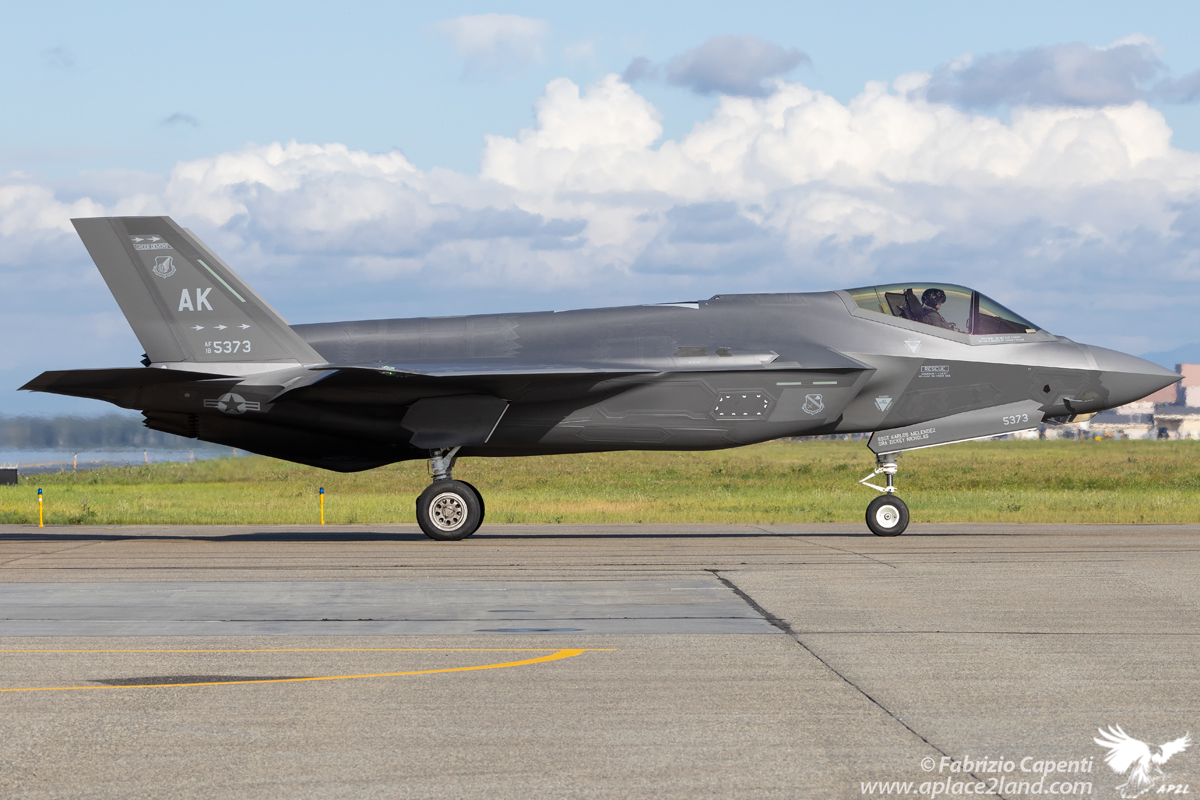
From JBER AFB, the following units also operated, in addition to the aforementioned Australian E-7A aircraft:
- 3rd Wing, based at JBER, operated with its Lockheed Martin F-22A Raptor aircraft.
- 2nd ARS, which transferred a Boeing KC-46A Pegasus from its base in McGuire to Alaska.
- 133rd ARS, part of the New Hampshire Air National Guard stationed in Portsmouth, stationed four of its Boeing KC-46A Pegasus at JBER.
- VMGR-152 “Sumos” of the Marines, stationed in Japan, specifically at the Iwakuni base, deployed one of its Lockheed Martin KC-130J Hercules to support in-flight refueling operations.
This type of multinational exercise allows air forces from different countries to integrate with each other and is a testament to the spirit of collaboration and shared commitment to maintaining peace and security in the Indo-Pacific region.
The authors would like to express its gratitude to all personnel of the 354th Public Affairs Office Fighter Wing for the welcome and availability received during the days spent in the Airbase, in particular to A1C R. Sandoval for having escorted us and having complied with our requests.
Other Exercises with involved USAF components: Astral Knight 2019, Falcon Strike 2022, Emerald Strike 2023.
